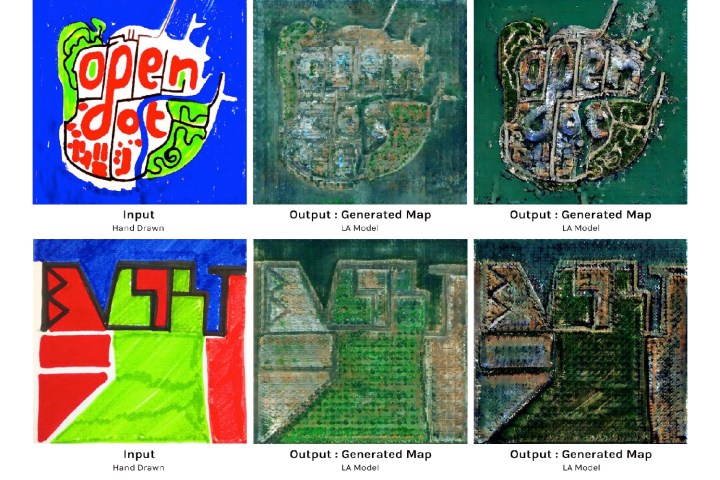
Jump forward to the present day, and that same heady blend of fact and fiction is the basis for another project called “Imaginary Cities” — this time involving a fancy neural network, capable of generating its own detailed maps based on no more than a rough sketch.
The project came out of a “machine learning for artists” workshop organized in Milan by the Opendot fablab collective. Members of the collective trained an artificial neural network by showing it satellite images and the elements each pictures contained, such as buildings, parks, roads and the like.

“The original idea was this: Imagine if you could build a tool that was able to take a hand drawing and use it to reproduce a very realistic map of a place that was completely invented,” Sabina Barcucci, one of the program managers who organized the workshop, told Digital Trends.
With this mission in mind, the creators then asked the neural network to generate entirely new maps based on what it had learned — albeit with some interesting twists, like redrawing New York in the style of another city, or even generating entirely new maps based on basic doodles. In short, picture Google’s DeepDream AI, but with a taste for cartography.
“Being able to understand and replicate the kind of patterns you find in a city lets you understand the main differences between cities around the world,” Barcucci continued. “Machine learning is also exciting as an explorative, creative tool for generation. The ability to have tools which can digest a huge number of files, understand the logic behind them, and then produce something completely new, but still part of the original thing — that opens up so many different possibilities.”
Editors' Recommendations
- Google Maps will now show coronavirus outbreaks in your area
- Google Maps places delivery and takeout front and center


